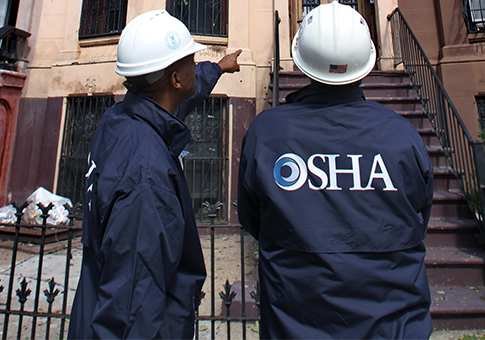The Department of Labor’s workplace safety watchdog has quietly crafted a legal interpretation of a longstanding rule that will allow labors representatives into non-union shops.
The department’s Occupational Safety and Health Administration (OSHA) issued a February guidance letter made public in April saying that labor union officials could participate in safety inspections at the request of an employee even if the employer is non-union.
"A person affiliated with a union without a collective bargaining agreement or with a community representative can act on behalf of employees as a walkaround representative so long as the individual has been authorized by the employees to serve as their representative," wrote OSHA Deputy Assistant Secretary Richard E. Fairfax.
OSHA conducts thousands of inspections on workplaces across the country every year, focusing particularly on the manufacturing sector. Employees are entitled to select an observer to accompany OSHA investigators on the inspections.
While union shops often select stewards to represent them, non-union workers select an employee to join the "walkaround." The new OSHA interpretation would allow outside parties, such as union representatives, to enter the workplace for the first time.
Bill Principe, an attorney and workplace safety expert at Constangy, Brooks, & Smith, called the move a "very significant departure from 40 years of [OSHA] practices," pointing to the fact that the regulation "specifically says that the representative shall be an employee."
"I’ve been doing this a while and I’ve never seen a situation where an OSHA officer or employee thought about bringing in someone from outside [the company]," he said. "This interpretation came out of left field."
Some labor watchdogs say that the interpretation is a Trojan horse, intended to help union officials gain entry into a workplace they would normally be excluded from without majority support from workers.
"They’re carrying the water of the big union bosses," said Glenn Taubman, an attorney with the National Right to Work Legal Defense Foundation. "They know that union organizing is in decline and are trying to help the unions get in any way they can. It’s part of the same regulatory scheme of the Obama administration to strangle employers and reward unions by making it easier to organize."
Fairfax issued the interpretation in response to a clarification request from a representative with the United Steel, Paper and Forestry, Rubber, Manufacturing, Energy, Allied Industrial and Service Workers International Union.
The regulation allows for third party experts, such as industrial hygienist or safety engineers to visit the site, but no mention is made of labor groups. Fairfax couched his interpretation in vague terms and extended the third-party language to unions.
Principe, the labor attorney, said such queries are common, but not solicited "without [the questioner] already knowing the answer."
"We’re not really talking about hygienists; that’s not the intent from a practical perspective. It’s a union rep asking," he said. "The letter is pretty straightforward."
Fairfax has since retired, according to an OSHA official. He could not be reached for comment.
OSHA spokesman Jesse Lawder denied that the interpretation departed from previous understanding of labor regulations because the field operations manual allows for third party inspections.
"OSHA expects that this clarification will have little impact," he said. "Having a walkaround representative is an important, longstanding right for workers to get an effective and thorough inspection."
Principe and other labor attorneys disagreed, pointing out that such language has referred to union shops, rather than non-union workplaces.
Principe said that the new interpretation’s vagueness could "cause lengthy delays" on inspections, especially the hundreds of surprise visits OSHA makes every year.
The letter does not make clear how many employees are required to request a union representative before one must be called. The OSHA investigator would then have to make a spot decision about how to proceed or call regional or national attorneys to decipher the rule.
"Presumably under this interpretation, any employee could say ‘well I want a union rep to accompany OSHA,’ even if it’s just on behalf of himself," he said.
Employers who want to avoid union proselytizing through safety inspections would be left with little recourse other than rejecting a safety inspection and asking OSHA investigators to obtain a warrant before entering the premises with union officials, according to Principe.
OSHA does not have to post its response to letters on the website, according to Principe, and when it does, "it’s making a point." The department hammered that point home when it edited a 2003 OSHA advisory that presented a contradictory, but traditional, interpretation of walkarounds.
"This is an OSHA Archive Document, and may no longer represent OSHA Policy. It is presented here as historical content, for research and review purposes only," the site now says.
Principe’s Constangy, Brooks, & Smith colleague, labor relations expert David Phippen, said the issue extends beyond the practical implications on an inspection site. The interpretation could allow union officials onto a site without having the approval of a company’s workers.
"OSHA avoids the main point that that representative has never been elected by majority of employees in a proper NLRB election," he said. "It’s sticking their nose into something they don’t have representative status in."
